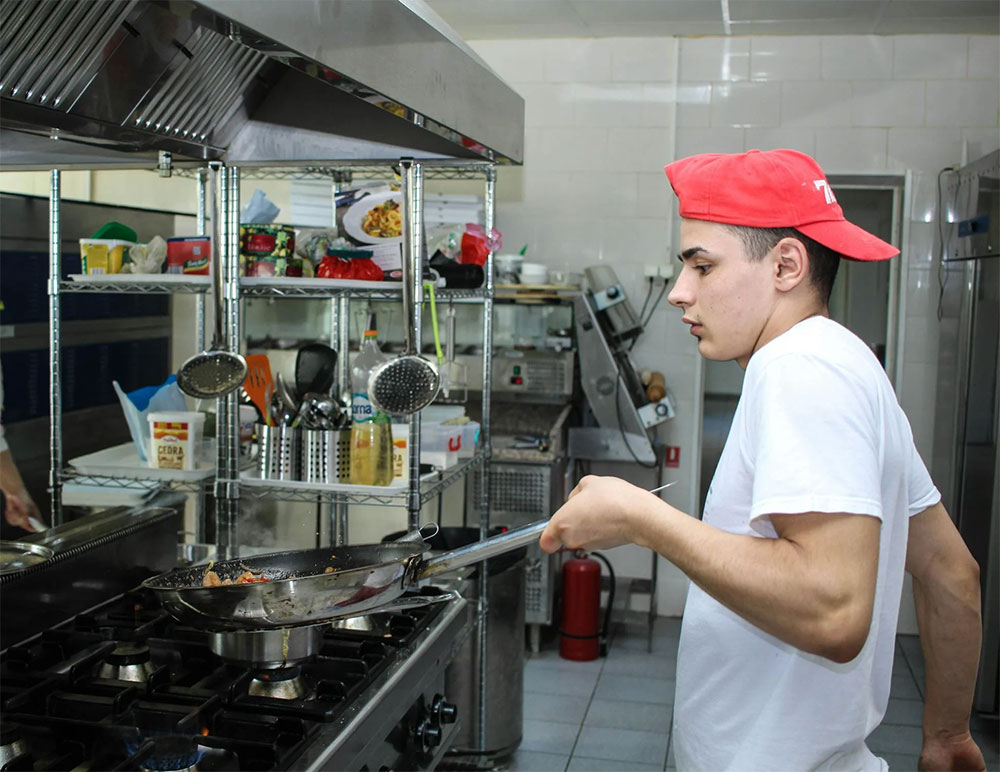
1. Procurement Challenges in Price-Sensitive Markets
Approximately 60% of B2B buyers (especially in emerging markets like Southeast Asia, Africa, and South America) prioritize price as the top decision-making factor. However, low prices often come with hidden costs—according to the 2023 Global Foodservice Equipment Procurement Report, equipment failures, repairs, and replacements caused by low-cost purchases account for 35% of annual procurement budgets.
Pain Point 1: Price Opacity and Volatility
- Industry Reality: Price variations among small suppliers can reach 40%, and raw material costs (e.g., stainless steel) directly impact equipment pricing.
- Case Study: A South American restaurant chain saw a 22% price hike within a year due to a lack of long-term supplier agreements.
- Buyer Demand: Predictable pricing and transparent quotation systems.
Pain Point 2: Hidden Costs from Quality Issues
- Data: 30% of equipment in developing countries fails within the first year, with repair costs averaging 15%-25% of the purchase price.
- Case Study: A hotel in Africa lost over $50,000 due to a cracked steam cabinet weld.
- Core Conflict: How to select durable, basic equipment within budget constraints.
Pain Point 3: High Maintenance Costs
- Survey Findings: 70% of buyers cite “expensive spare parts” and “lack of local service” as top challenges.
- Case Study: An Indonesian food factory lost $100,000 in orders after a 2-week shutdown waiting for imported parts.
2. Practical Solutions: Minimizing Total Cost of Ownership
Strategy 1: Optimizing Procurement Costs
- Bulk Purchasing + Long-Term Agreements
- Bulk orders reduce unit prices by 10%-20% (e.g., a Philippine chain saved $500K annually through centralized procurement).
- Lock prices for 2-3 years to mitigate material cost fluctuations.
- Utilizing Refurbished Equipment
- Refurbished commercial equipment costs 40%-60% less than new units, with 1-year warranties (verified in Japan and Germany).
Key Criteria: Choose suppliers providing factory inspection reports and warranties.
- Refurbished commercial equipment costs 40%-60% less than new units, with 1-year warranties (verified in Japan and Germany).
- Modular Design for Cost Reduction
- Standardized components (e.g., universal heating tubes, valves) cut replacement part costs by 60%.
Strategy 2: Building a Quality Control System
- Third-Party Pre-Shipment Inspections
- Hire SGS/BV to inspect:
- Weld strength (1.5x industry standards)
- Electrical safety (ground resistance ≤0.1Ω)
- Material compliance (304 stainless steel thickness ≥1.2mm).
- Hire SGS/BV to inspect:
- Supplier Tiered Management
- Implement an ABCD rating system:
Tier On-Time Delivery Pass Rate Price Range A ≥98% ≥95% Medium-High B ≥95% ≥90% Medium C ≥90% ≥85% Medium-Low D <90% <85% Low - Recommendation: Prioritize Tier B suppliers for balanced cost-quality ratios.
- Implement an ABCD rating system:
Strategy 3: Regional Service Networks
- Localized Spare Parts Warehouses
- Establish regional warehouses to stock high-wear parts (e.g., heating tubes, thermostats), reducing delivery time from 15 days to 3.
- “Rapid Repair Team” Model
- Train local technicians to handle basic repairs (seal replacement, circuit checks), cutting manufacturer dispatch needs by 50%.
3. Success Stories: Low-Cost, High-Reliability Procurement
Case 1: Vietnamese Fast-Food Chain
- Challenge: Procure 50 commercial fryers under $800/unit.
- Solution:
- Selected a Tier B Chinese supplier with a 2-year price lock ($750/unit).
- Required a spare parts warehouse in Ho Chi Minh City.
- Third-party inspection rejected 5% of units, replaced free of charge.
- Result: <3% failure rate, 40% lower 3-year TCO vs. local suppliers.
Case 2: Peruvian Central Kitchen
- Challenge: Durable equipment for high-altitude regions with costly logistics.
- Solution:
- Purchased thickened stainless steel units (1.5mm, +10% cost).
- Standardized interfaces for local repair part compatibility.
- Result: Equipment lifespan extended from 3 to 5 years, maintenance costs down 60%.
4. Action Plan for Buyers
- Cost Calculator: Use an Excel template to estimate 5-year TCO (purchase + maintenance + energy).
- Supplier Negotiation Checklist:
- Demand material test reports and warranties (≥1 year).
- Negotiate spare parts discounts (5%-10% of equipment price).
- Contract Clauses:
- Late delivery penalties (0.1%-0.3% of contract value daily).
- Free replacements for substandard quality.
 KingHigher
KingHigher
